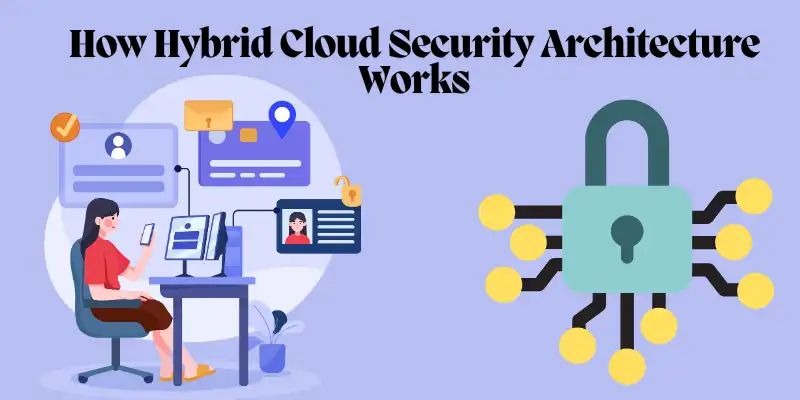Exploring Hybrid Cloud Security Architecture for Enhanced Safety
Published: 3 Jan 2025
Did you know that 85% of enterprises now adopt hybrid cloud models, yet most struggle to secure their environments? Hybrid cloud security architecture is the foundation businesses rely on to safeguard sensitive data, maintain compliance, and protect against cyber threats. As the use of hybrid clouds grows, so does the need for robust security measures to address unique vulnerabilities.
Why is securing a hybrid cloud so complex when it promises flexibility? Hybrid cloud security architecture is the key to solving this puzzle. It bridges the gap between private and public cloud environments, ensuring your data stays protected while you enjoy the benefits of both. But what does it take to build a secure hybrid cloud setup?
Are you worried about data breaches, compliance issues, or inconsistent security across your hybrid cloud? You’re not alone. Many businesses face these challenges as they transition to hybrid cloud setups. This is where hybrid cloud security architecture comes into play, offering a structured way to secure your systems and data across multiple environments.
Imagine a digital fortress that seamlessly protects your data across private and public clouds. Hybrid cloud security architecture offers precisely that. Blending advanced tools and best practices ensures your hybrid cloud remains secure, efficient, and ready to handle evolving threats.

What is Hybrid Cloud Security Architecture?
Hybrid cloud security architecture refers to the framework and practices designed to safeguard data, applications, and systems operating within a hybrid cloud environment. A hybrid cloud integrates private and public clouds, offering businesses flexibility and scalability. However, this mixed environment requires robust security measures to address unique challenges, including data breaches and compliance risks.
Importance of Hybrid Cloud Security Architecture
In today’s digital age, businesses are rapidly adopting hybrid cloud models to gain flexibility and cost efficiency. The importance of hybrid cloud security architecture lies in its ability to:
- Protect sensitive data during migration and storage.
- Ensure compliance with industry regulations.
- Enable seamless integration of diverse cloud environments.
- Detect and mitigate cyber threats effectively.
Example: A healthcare provider using hybrid cloud ensures patient data remains secure while leveraging cloud capabilities for analytics.
Elements of Hybrid Cloud Security Architecture
A robust hybrid cloud security architecture consists of the following elements:
- Identity and Access Management (IAM): Ensures that only authorized users can access resources.
- Data encryption: protects sensitive information during transmission and storage.
- Network Security: Includes firewalls and intrusion detection systems to monitor threats.
- Compliance Management: Aligns the architecture with regulatory standards like GDPR or HIPAA.
- Continuous Monitoring: Tracks and responds to anomalies in real-time.

How Hybrid Cloud Security Architecture Works
Hybrid cloud security architecture functions by implementing layered security controls across private and public cloud infrastructures. Here’s a step-by-step overview:
- Access Control: Role-based permissions regulate who can access what.
- Data encryption: secures data both at rest and in transit.
- Threat Detection: AI-powered tools monitor for unusual activity.
- Policy Enforcement: Ensures consistent security policies across all environments.
Types of Hybrid Cloud Security Architecture
There are various approaches to hybrid cloud security, including:
- Centralized Security Architecture: Manages security from a single control point.
- Distributed Security Architecture: Each cloud environment maintains its own security controls.
- Integrated Security Architecture: Combines tools from different providers to create a unified system.
Example: A financial institution might use integrated security to secure transactions across both private and public clouds.
Roles of Hybrid Cloud Security Architecture in Digitalized Security
Hybrid cloud security architecture plays a pivotal role in digitalized security by:
- Ensuring secure data transfer between digital platforms.
- Protecting customer data in e-commerce and financial systems.
- Enhancing resilience against cyberattacks.

History of Hybrid Cloud Security Architecture
The concept of hybrid cloud security evolved alongside the adoption of cloud computing. Initially, organizations relied on siloed security approaches, but the growing complexity of hybrid environments necessitated a more integrated architecture. Today, hybrid cloud security architecture is a necessary component of digital transformation strategies.
Advantages and Disadvantages of Hybrid Cloud Security Architecture
Advantages:
- Flexibility: Supports diverse workloads and applications.
- Cost-Efficiency: Balances public and private cloud expenses.
- Scalability: Easily adapts to growing business needs.
Disadvantages:
- Complexity: Managing multiple environments can be challenging.
- Integration Risks: inconsistent security policies may lead to vulnerabilities.
- Cost: Advanced tools can be expensive for small businesses.

Future of Hybrid Cloud Security Architecture
The future of hybrid cloud security architecture is promising, driven by advancements like:
- AI and Machine Learning: Enhancing threat detection and response.
- Zero-Trust Models: Strengthening access control measures.
- Cloud-Native Security Tools: Simplifying integration and management.
Requirements for Hybrid Cloud Security Architecture
To implement effective hybrid cloud security architecture, organizations need:
- Comprehensive IAM Systems: To control user access.
- Advanced Encryption Solutions: For secure data handling.
- Unified Security Policies: To ensure consistency across environments.
- Skilled IT Teams: For regular monitoring and updates.
Personal Recommendations for Hybrid Cloud Security Architecture
- Start with a security audit: identify current vulnerabilities.
- Invest in Training: Educate your team about best practices.
- Adopt zero-trust principles: limit access to only what is necessary.
- Regularly Update Systems: Patch vulnerabilities promptly.
Conclusion
So guys, in this article, we’ve covered hybrid cloud security architecture in detail. To ensure your hybrid cloud setup is secure, I recommend starting with a thorough security audit to identify vulnerabilities and align your systems with the latest security practices. Educate your team on zero-trust principles and invest in tools that simplify cloud security management. Take the first step today towards building a resilient and secure hybrid cloud environment!
FAQs about Hybrid Cloud Security Architecture
What is hybrid cloud security architecture?
Hybrid cloud security architecture is a framework designed to secure data and applications across private and public clouds. It uses tools and practices like encryption, access management, and monitoring to protect against cyber threats. The goal is to ensure seamless and secure operations in a mixed cloud environment.
Why is hybrid cloud security important?
It’s important because it protects sensitive data and applications from breaches. Hybrid cloud security ensures compliance with regulations and defends against cyberattacks. Without it, businesses risk losing valuable data and facing operational disruptions.
How does hybrid cloud security architecture work?
It works by combining tools and strategies to secure private and public cloud environments. For example, it uses access controls to manage permissions, encrypts data for safety, and monitors systems to detect threats. These layers work together to create a secure hybrid cloud setup.
What are the main challenges of hybrid cloud security?
Key challenges include managing security across multiple environments, ensuring consistent policies, and detecting threats in real time. Data transfer between clouds can also pose risks. Proper planning and tools can help overcome these issues.
What tools are commonly used for hybrid cloud security?
Tools like AWS Security Hub, Microsoft Defender for Cloud, and Palo Alto Prism are popular. They offer features like threat detection, compliance management, and encryption. The right tools depend on your specific business needs.
Can small businesses afford hybrid cloud security?
Yes, many affordable solutions are available for small businesses. Cloud providers often offer built-in security tools, which can be cost-effective. Start with basic measures like encryption and IAM, and scale up as needed.
What is the role of AI in hybrid cloud security?
AI helps by detecting unusual patterns and potential threats faster than humans. It can analyse large datasets to identify vulnerabilities. Using AI-powered tools enhances the efficiency and effectiveness of hybrid cloud security.
What are some best practices for hybrid cloud security?
Start with a security audit, implement strong access controls, and encode all data. Regularly update software and use monitoring tools to detect threats. Adopting a zero-trust approach is also highly recommended.
What industries benefit the most from hybrid cloud security?
Industries like healthcare, finance, and e-commerce benefit greatly. These sectors handle sensitive data and require compliance with strict regulations. Hybrid cloud security ensures they can operate securely while leveraging cloud advantages.
How can I get started with hybrid cloud security?
Begin with a security audit to identify weak points in your system. Invest in necessary tools like IAM and encryption, and educate your team on best practices. Gradually build a comprehensive security strategy tailored to your needs.

- Be Respectful
- Stay Relevant
- Stay Positive
- True Feedback
- Encourage Discussion
- Avoid Spamming
- No Fake News
- Don't Copy-Paste
- No Personal Attacks

- Be Respectful
- Stay Relevant
- Stay Positive
- True Feedback
- Encourage Discussion
- Avoid Spamming
- No Fake News
- Don't Copy-Paste
- No Personal Attacks





